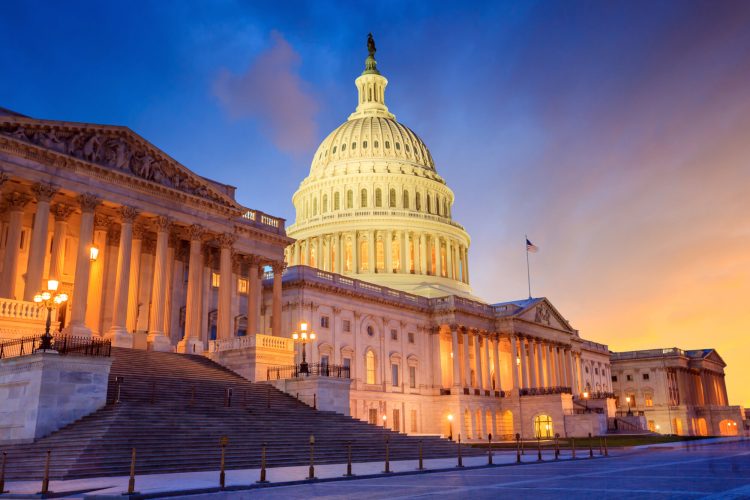This week on Facing the Future, we spoke with Richard Jackson, founder and president of the Global Aging Institute, about the enormous impact that our aging population is having on the federal budget and our economy. A larger senior population combined with a slower growing working age population means more expenditures for safety net programs such as Social Security and Medicare, and a declining ratio of workers to beneficiaries. Concord Coalition chief economist Steve Robinson and policy director Tori Gorman joined me for this discussion. Later in the program Tori, Steve and I looked at some of the latest economic data, including a resilient labor market and declining inflation, and we discussed what action the Federal Reserve might take in the future.
Demographers recently determined that the United States now has its highest median age ever recorded, and our country’s population will continue to trend older. One factor that has helped keep our working age population growing is immigration, but even that has declined dramatically in recent years. Jackson said until quite recently, the United States was really an outlier among its developed world peers in terms of median age.
“From the late 1980s until the great recession (2008-2010), the United States had a population replacement rate that hovered between 2.0 and 2.1. That’s close to the replacement rate needed to maintain a stable population from one generation to the next, and it was higher than any other developed country except Iceland, New Zealand, and Israel,” said Jackson. “On top of this relatively high fertility rate, we also had substantial net immigration. This seemed to ensure that the United States – despite the aging of the baby boom generation – would remain the youngest of the major developed economies for the foreseeable future. And unlike most European countries and Japan, we would still have a growing workforce and a growing population. No longer. Since the great recession, the fertility rate has collapsed. It’s fallen every year since 2008 except for 2021. It’s now at 1.65, and meanwhile net immigration since the Great Recession has also fallen substantially. So you put these two developments together, and unless they reverse, the United States will age considerably more than previously thought.”
Jackson points out the profound implications this has for our federal budget and for our economy.
“Graying means paying,” said Jackson. “It means paying more for pensions, more for healthcare, more for social services and especially long-term care for the frail elderly. Falling fertility together with rising life expectancy translates into a higher age dependency ratio, the ratio of elderly to working age adults. This translates directly and proportionately into a higher tax rate for pay-as-you-go benefit programs like Social Security and Medicare. On the retirement side, that’s relatively straightforward. You’ve got more retirees relative to workers and the cost rate goes up. In healthcare, you have additional kickers. Not only do you have more elderly relative to workers, but the elderly per capita spend or consume three times as much as the non elderly in healthcare services, and 20 times as much in long-term care services. Demographics has that big extra kicker on the growth of healthcare costs. We already are facing an unsustainable fiscal outlook. The demographic changes will make that outlook even more unsustainable.”
Jackson says in addition to the federal budget, these demographics will also have a profound impact on the economy over time.
“We’re talking about fewer babies, and fewer babies eventually means fewer workers,” said Jackson. “Declining fertility translates into – over time – slower growth in the working age population. Slower growth in the working age population – all other things like labor force participation by age being equal – translates into slower growth in employment. Slower growth in employment translates into slower growth in GDP [Gross Domestic Product]. It’s really just simple arithmetic. The working age population as recently as the 1990s and early 2000s was growing at 1.5% per year. It’s now growing at 0.2% per year. The CBO [Congressional Budget Office] projects it will grow at between 0.2% and 0.3% out through the 2050s and beyond. Unless something else happens, that knocks 1.2% off of potential GDP growth. Basically, we’ll be growing in the future at half of our post WWII rate, and that’s an optimistic view.”
So what is to be done to reverse some of these trends? One obvious answer that can quickly change the ratio of working age population to the elderly plus give economic growth a shot in the arm is increasing immigration. But Jackson says there are other factors at play in the decisions by young people and particularly young women whether to have children, how many children to have, and when in their lives to become parents.
“Along with rising affluence and rising educational attainment for women, fertility rates come down,” said Jackson. “The question you want to ask about the United States is not why the fertility rate has come down, but why it stubbornly remained so high for so much longer than it did elsewhere. There are three big explanations for that. One is greater religiosity of the U.S. population. There is a very strong positive correlation between degree of religious conviction and the fertility rate across all of the world’s monotheisms. Two is optimism about the future and future economic prospects for yourself and also for your children. And three is how easy is it for young people to establish independent households and launch careers. All of that changed starting around the time of the Great Recession. America is less religious, less optimistic, and most importantly: it is a hell of a lot harder for millennials [and Gen Z] now to launch careers and establish independent households than it was for boomers and X-ers at their age.”
Hear more on Facing the Future. I host the program each week on WKXL in Concord N.H., and it is also available via podcast. Join us as we discuss issues relating to national fiscal policy with budget experts, industry leaders, and elected officials. Past broadcasts are available here. You can subscribe to the podcast on Spotify, Pandora, iTunes, Google Podcasts, Stitcher, or with an RSS feed. Follow Facing the Future on Facebook, and watch videos from past episodes on The Concord Coalition YouTube channel.
Continue Reading











